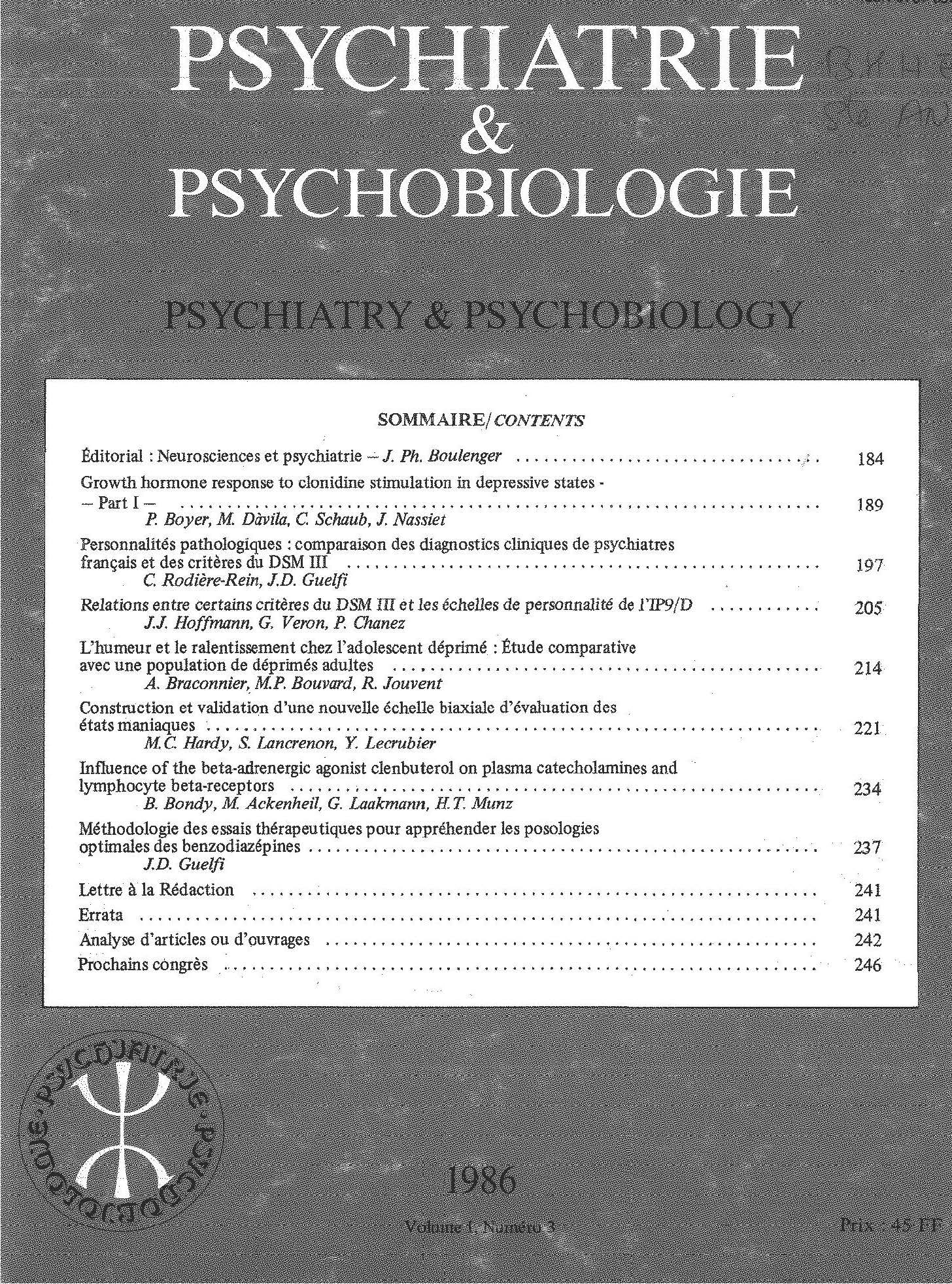Article contents
Le syndrome de sevrage des antidépresseurs
Published online by Cambridge University Press: 28 April 2020
Résumé
L'ensemble des signes cliniques survenant à l'arrêt d'un traitement antidépresseur a fait l'objet de nombreuses descriptions dans la littérature anglo-saxonne. La fréquence du syndrome de sevrage varie selon les auteurs. Les principaux types de trouble sont d'allure digestive ou pseudo-grippale. Un état anxieux, des perturbations du sommeil, des troubles moteurs et des épisodes maniaques ou hypomaniaques peuvent s'observer à l'arrêt d'un traitement antidépresseur tricyclique. Plus rarement apparaissent des attaques de panique, une confusion mentale ou bien une arythmie cardiaque. La plupart des antidépresseurs sont susceptibles d'induire un syndrome de sevrage. Les facteurs de risque d'apparition de ce syndrome ne sont pas précisément déterminés. Il semble néanmoins qu'un arrêt brutal d'un traitement comportant des doses élevees d'un antidépresseur à fort potentiel anticholinergique expose plus particulièrement aux signes de sevrage. Les traitements du sevrage proposés sont la reprise de l'antidépresseur ou bien la prescription de dérivés atropiniques. La prévention des signes de sevrage repose sur une diminution progressive des doses d'antidépresseurs. La pathogénie du trouble est une hyperactivité cholinergique ou une hyperstimulation noradrénergique. Enfin, les conséquences pratiques du syndrome de sevrage sont évoquées.
Summary
The antidepressant withdrawal syndrome has been described by many authors. The most common symptoms are general somatic or gastrointestinal distress, “flu-like syndrome”, anxiety, sleep disturbances, movement disorders, mania or hypomania, panic attacks, arrhythmia and delirium. The etiology of withdrawal symptoms is not fully known. In any case, abrupt discontinuation of high doses of cholinergic tricyclic antidepressants appears to be important. The most effective treatment could either be the reinstitution of an antidepressant drug or the administration of atropine sulphate or another tertiary belladonna alkaloid. Prevention of the withdrawal syndrome requires a gradual reduction of antidepressants. The biological mechanism of withdrawal syndromes appears to be related to “cholinergic overdrive” or noradrenergic hyperactivity. In conclusion, the clinical consequences and mode of prevention of the syndrome are discussed.
- Type
- Revue
- Information
- Copyright
- Copyright © European Psychiatric Association 1989
References
Références
- 1
- Cited by



Comments
No Comments have been published for this article.